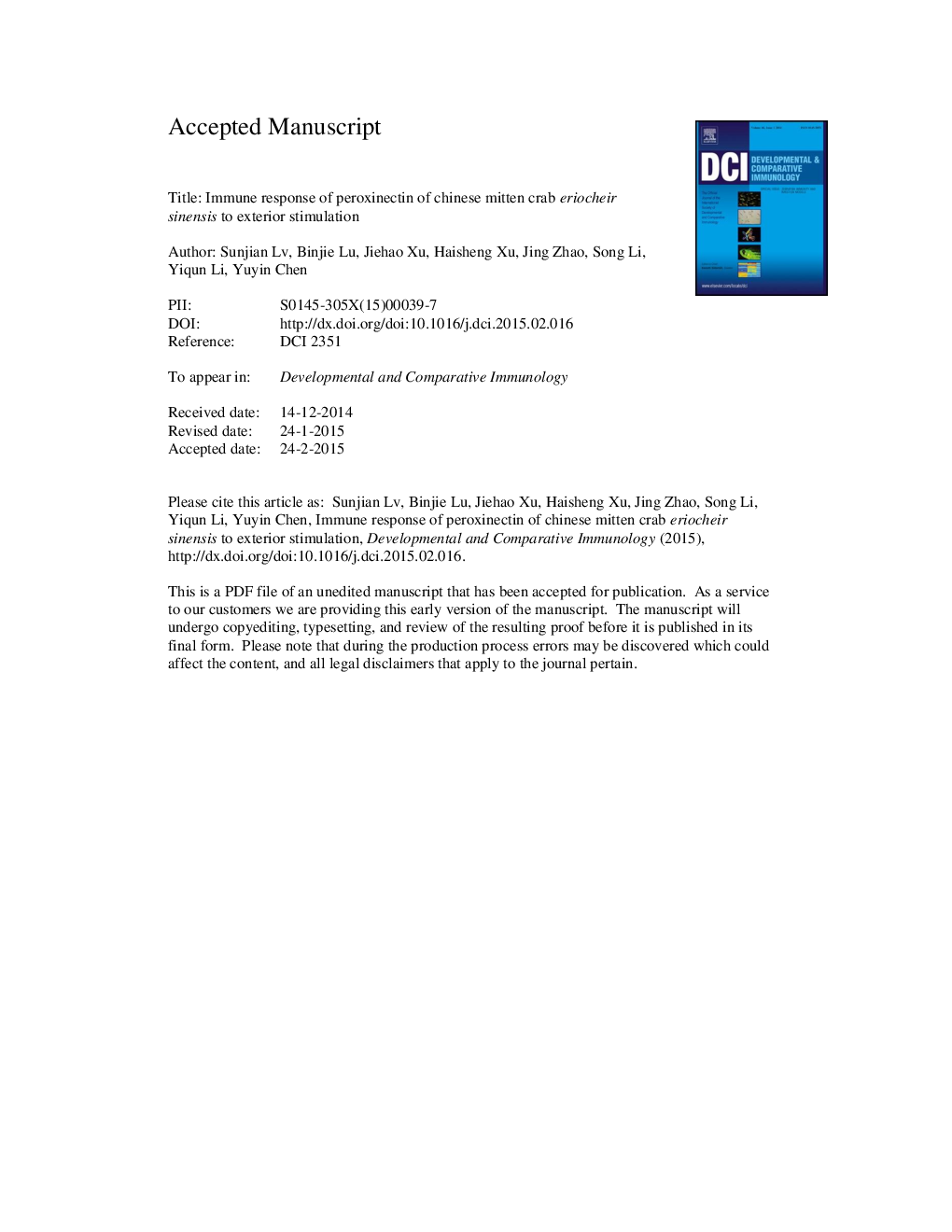| Article ID | Journal | Published Year | Pages | File Type |
|---|---|---|---|---|
| 10971421 | Developmental & Comparative Immunology | 2015 | 26 Pages |
Abstract
Peroxinectin possesses the features of both peroxidase activity and adhesive property and plays important roles in innate immune system of crustaceans. In this study, the sequence of peroxinectin of Eriocheir sinensis (EsPX) was analyzed and its expression in response to exterior stimulation was detected in both in vivo and in vitro examination. We showed that the full-length cDNA sequence was composed of 2701âbp and owned a molecular mass of 85.2âkDa and a theoretical pI (isoelectric point) of 6.91. Real-time PCR revealed that the EsPX was mainly distributed in the muscle, hemocytes and stomach. Furthermore, the EsPX was verified to be located in hyalinocytes, semigranulocytes and granulocytes, and was distributed throughout the cytoplasm and nucleus, especial in cytoplasm. After injected with beads, lipopolysaccharide (LPS) and Aeromonas hydrophila, the EsPX mRNA expression was significantly up-regulated and peaked up at 4, 2 and 16âh respectively (Pâ<0.05). In the in vitro experiment, the stimulation of LPS and beads also induced a prominent boost of EsPX protein in primary cultured hemocytes. The expression of EsPX was peaked up at 4 and 8âh for LPS and beads challenged groups respectively, followed by remarkable release of the incremental EsPX into the extracellular matrix. These findings suggested that the expression of EsPX was susceptible to exterior stimulation, and that the highly expressional EsPX would be released into extracellular matrix by the exterior stimulus.
Related Topics
Life Sciences
Biochemistry, Genetics and Molecular Biology
Developmental Biology
Authors
Sunjian Lv, Binjie Lu, Jiehao Xu, Haisheng Xu, Jing Zhao, Song Li, Yiqun Li, Yuyin Chen,
